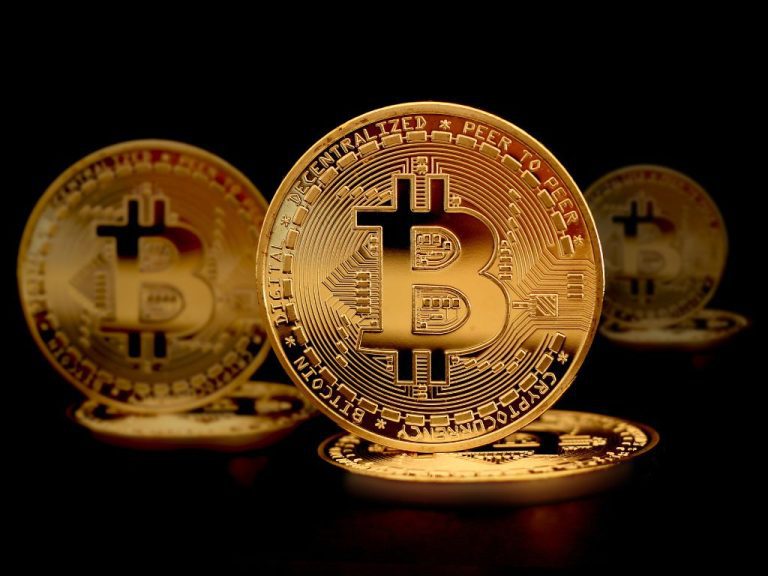Introduction
Imagine opening your crypto wallet and seeing brand-new tokens appear — no purchase, no request, no warning. Just… free money?
That’s the seductive promise of a cryptocurrency airdrop — and yes, sometimes it’s real.
Uniswap’s $UNI airdrop in 2020 turned early users into overnight five-figure holders. Others, like $ARB or $PYTH, rewarded loyalty with serious gains.
But here’s what most people miss: While some airdrops deliver free wealth, others are baited traps — designed to phish your private keys, infect your wallet, or pump-and-dump your trust into oblivion.
So how do you tell the difference?
This guide breaks down how crypto airdrops really work, the different types you’ll encounter, how to claim them safely, and what red flags to avoid. Because in Web3, free isn’t always safe… and “airdrop” doesn’t always mean opportunity.

Key Takeaways
- A cryptocurrency airdrop is a free token distribution used by blockchain projects to promote adoption or reward users.
- Legit airdrops come from real projects like Uniswap, Arbitrum, or Starknet — usually through holding tokens, using apps, or joining testnets.
- Scam airdrops often ask for private keys, upfront payments, or impersonate popular protocols — never share sensitive info.
- Airdropped tokens may be taxable income in many countries — including the U.S.
- Best practice: Use a burner wallet, verify all sources, and treat airdrops as a bonus — not a payday.
What Is a Cryptocurrency Airdrop?
A cryptocurrency airdrop is when a blockchain project sends free tokens directly to users’ wallets — no payment required, no strings (usually) attached.
It sounds like free money because… it often is.
But airdrops aren’t random acts of generosity. They’re a tactical growth strategy — used to:
- Reward early adopters
- Build hype and momentum
- Decentralize token ownership
- Incentivize participation in new protocols
The most famous example?
In 2020, Uniswap dropped 400 $UNI tokens to every wallet that had used the platform — worth over $1,000 at the time. Some held until it became worth $10,000+.
Since then, airdrops have exploded across Ethereum, Solana, Layer 2s, and emerging chains.
But for every legit drop… there are dozens of scams waiting to bait careless users.
That’s why understanding how they work — and how to filter the real from the fake — isn’t just useful.
It’s essential.

Why Projects Use Airdrops
Free tokens might seem generous — but in crypto, nothing is random.
Airdrops are marketing weapons, and when used right, they can turn unknown protocols into ecosystem giants overnight.
Here’s why blockchain projects love airdrops:
🚀 Hype and Virality
Airdrops get people talking.
One well-timed announcement can trigger viral threads on Twitter, Reddit, and Discord — driving awareness without spending millions on ads.
- It’s marketing with built-in FOMO.
🗳️ Decentralized Token Distribution
Instead of selling tokens to VCs or insiders, airdrops spread them across thousands of wallets. This creates a broader base of holders and reduces the risk of whale manipulation.
- Airdrops = community-powered ownership.
🎁 Rewarding Early Users and Loyalty
Many projects airdrop to users who supported them early — whether through staking, bridging, or simply interacting with the platform.
It’s retroactive gratitude that builds long-term loyalty.
- Example: Arbitrum rewarded users who bridged assets or voted in governance.
🧪 Incentivizing Testnet Participation
Want people to stress-test your network before launch? Offer them a future airdrop.
Protocols like Starknet, zkSync, and LayerZero used this model to encourage real usage before going live.
- No better incentive than the chance at “free” value.
Bottom line? Airdrops aren’t gifts. They’re strategic user acquisition tools — and if you know how to spot the right ones, you can ride the wave before it breaks.

Types of Crypto Airdrops (With Examples)
Not all airdrops are created equal.
Some reward loyalty. Others require tasks. A few are pure luck. And some? Designed to trick you into handing over control of your wallet.
Here are the six main types of cryptocurrency airdrops, how they work, and what you should watch for:
🧩 Bounty Airdrop
How it works: You complete small tasks (e.g., follow on Twitter, retweet, join a Discord) in exchange for tokens.
Example: $BONK (Solana meme coin) ran bounties to build hype.
Risk Level: ⚠️ Medium — requires interacting with platforms or DApps; avoid giving sensitive info.
💰 Holder Airdrop
How it works: Projects reward users who hold a certain token or NFT at a snapshot date.
Example: $ARB (Arbitrum) sent tokens to users holding ETH bridged on its network.
Risk Level: ✅ Low — as long as it’s from a legit project.
🏅 Exclusive Airdrop
How it works: Reserved for early testers, VIP contributors, or governance voters.
Example: $PYTH airdrop targeted early oracle network users.
Risk Level: ✅ Low — usually comes from respected projects.
🎲 Raffle or Lottery Airdrop
How it works: Winners are selected at random from a pool of users. Sometimes used by NFT projects or meme coins.
Example: Random NFT giveaways or token lotteries.
Risk Level: ❌ High — often used to harvest wallet data or build hype with no delivery.
⚒️ Hard Fork Airdrop
How it works: After a blockchain splits, holders of the original token receive the new chain’s token.
Example: Ethereum Classic ($ETC) was airdropped to ETH holders post-fork.
Risk Level: ⚠️ Medium — may require technical steps or result in unstable chains.
Understanding these types can help you spot legit opportunities, filter out noise, and avoid giving your wallet address to bad actors in exchange for worthless tokens.

How to Claim Airdrops Safely
Here’s the hard truth: every scam airdrop looks legit until it drains your wallet.
That’s why knowing how to claim airdrops safely isn’t optional — it’s essential.
Follow these steps like gospel:
1. Find Legit Projects — Not Random Links
Start with known sources:
- Official Twitter accounts, Discord servers, or blog posts
- Trusted aggregator sites like AirdropAlert, Earnifi, or DeFiLlama
🚫 Avoid links from Telegram DMs, fake accounts, or shady “claim here now!” pop-ups.
2. Verify Authenticity Before You Interact
Red Flags:
- Requests for your private key
- Urgent countdowns
- Upfront payments or “gas deposits”
- Poor grammar, cloned domains
Green Flags:
- Transparent eligibility criteria
- Verified team/project
- Active community and consistent messaging
Triple-check the domain — one letter off could cost everything.
3. Use a Burner Wallet
Create a fresh wallet (e.g., via MetaMask or Rabby) just for airdrops.
Never use your primary wallet for testing, claiming, or connecting to new DApps.
- If something goes wrong, your main assets stay safe.
4. Complete the Tasks (If Required)
Some legit drops ask you to:
- Follow accounts
- Join a Discord
- Use a testnet or DApp
- Hold a token at a snapshot date
Do the work — but only on trusted platforms.
5. Claim Responsibly
Some tokens appear automatically. Others require manual claiming — usually via a dApp or smart contract interaction. Always review:
- Gas fees
- Token contract address
- Permissions you’re granting
Use Revoke.cash to clean up token approvals after claiming.
6. Stay Organized
Track:
- Which wallets you’ve used
- Which projects you’ve qualified for
- Which claims are pending
A simple spreadsheet can save you from confusion — or missed money.
Done right, airdrops can be low-risk, high-reward. Done wrong, they’re invisible traps hiding in plain sight.

Cryptocurrency Airdrop Risks: Don’t Get Scammed
Here’s the truth most people learn after they lose money: The biggest airdrop risk isn’t missing one — it’s trusting the wrong one.
Scammers know the words “free tokens” short-circuit your caution. That’s why fake airdrops have become one of the fastest-growing tactics in Web3 phishing.
Here’s what to watch out for:
🧪 Dusting Attacks
You receive a tiny amount of a random token — looks harmless. But it’s bait.
Scammers use these tokens to track wallet activity, identify targets, or trigger malware if you interact.
- Never touch random tokens you don’t recognize. Ignore or hide them in your wallet UI.
🎭 Fake Claim Sites
Scammers build convincing clones of real projects with slightly altered URLs. You connect your wallet, sign a transaction, and boom — they drain everything.
- Always verify the project’s official domain. Bookmark trusted sources. Don’t Google your way into a trap.
💸 Gas or Payment Scams
“Just pay a small gas fee to unlock your airdrop!”
No. Real airdrops either arrive automatically or require interaction with a legit contract. If someone’s asking for upfront payment — it’s a scam.
- Never pay to claim. Legit projects cover the gas or let you choose to claim later.
🧾 Tax Traps
In countries like the U.S., airdrops are considered taxable income the moment you receive them — not just when you sell.
That means even if a token loses value, you could owe taxes based on its worth at the time it hit your wallet.
- Pro tip: Track timestamps and values. Use a tax tracker or consult a crypto-savvy accountant.
🛡️ Malicious Token Approvals
Some airdrops trick you into approving smart contract permissions that let them withdraw funds or tokens from your wallet later.
- Use Revoke.cash to check and revoke token permissions regularly.
Most airdrop risks are avoidable — if you slow down, double-check, and treat every interaction like a potential threat until proven safe.

Can You Profit From Cryptocurrency Airdrops?
Absolutely — but don’t let the dream of “free money” cloud your judgment.
Airdrops have made people thousands… and also lured them into rug pulls, tax bills, and malware traps.
So what’s the real answer?
You can profit — if you understand the game.
✅ Success Story: $UNI & $ARB
- In 2020, Uniswap dropped 400 $UNI tokens to every past user. Some wallets saw over $10,000 in value.
- In 2023, Arbitrum’s $ARB airdrop rewarded early ecosystem users — in some cases with five-figure payouts.
These weren’t scams or luck — they rewarded early interaction with legitimate platforms.
⚠️ Cautionary Tale: Squid Game Token
The Squid Game token ($SQUID) mimicked Netflix branding, launched a fake airdrop campaign, and then rug-pulled millions in hours.
No way to sell. No refunds. Just lost capital and regrets.
How to Maximize Your Odds
Want to catch the next legit drop? Focus on:
- Testnets: Participate in early versions of promising networks like zkSync, Starknet, or LayerZero.
- Governance: Hold and vote with governance tokens — projects often reward community engagement.
- DeFi Protocols: Use decentralized apps (staking, lending, bridging). The more active your wallet, the more likely you’ll qualify.
- Stay Updated: Follow airdrop hunters, project roadmaps, and Discord alpha channels.
Bottom line? Airdrops are like crypto scratch tickets — most turn up nothing. But if you do the work, research the right projects, and stay early, the rewards can be very real.

FAQs About Cryptocurrency Airdrops
Q: Are cryptocurrency airdrops legal?
A: Yes, airdrops are legal in most jurisdictions. However, their tax treatment varies. In countries like the United States, they are considered taxable income upon receipt. In others, like Portugal, they may be exempt. Always consult a qualified tax professional based on your location.
Q: Why did I receive random tokens in my wallet?
A: Some legitimate projects distribute tokens to active wallets without notice. However, scammers also send unsolicited tokens as part of “dusting attacks” to track or exploit your wallet. If you don’t recognize the token, avoid interacting with it.
Q: How can I tell if an airdropped token is real or worthless?
A: Search the token on reliable platforms like CoinGecko or CoinMarketCap. A legitimate token will typically have a listed contract address, trading volume, and active exchange listings. If none of these exist, the token may be illiquid or fraudulent.
Q: How do I sell airdropped tokens?
A: If the token is listed, you can use a decentralized exchange (like Uniswap) or a centralized exchange that supports it. You’ll need to approve the token in your wallet and be prepared to pay gas fees. Low-liquidity tokens may result in slippage or failed swaps.
Q: Can I become wealthy from cryptocurrency airdrops?
A: While some airdrops — such as Uniswap’s $UNI or Arbitrum’s $ARB — have been highly profitable, most are either low in value or become worthless over time. Airdrops should be viewed as a potential bonus, not a guaranteed income strategy.

Conclusion: Are Airdrops Worth It?
Airdrops are the crypto world’s version of scratch tickets — easy to claim, tempting to chase, and occasionally life-changing.
Yes, some deliver serious value. But most? They’re noise. Hype. Or worse… a trap dressed like a gift.
Here’s the reality: You can profit from airdrops. You can catch early rewards. But only if you treat them like a strategy — not a shortcut.
- Use a burner wallet.
- Never share your private key.
- Don’t pay to claim.
- Stay informed, stay skeptical, and never chase the hype blind.
Because in crypto, nothing is truly free — except regret, if you’re not careful.
🔗 Want more no-fluff crypto definitions? Explore our Full Cryptocurrency Glossary.
Next: read our Cryptocurrency Guide.